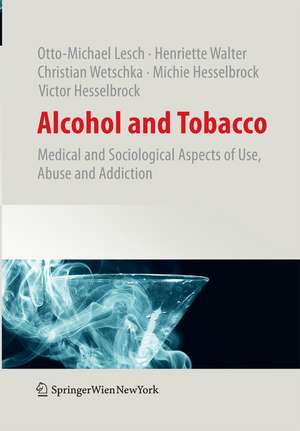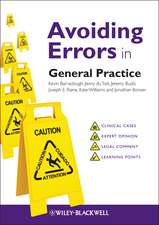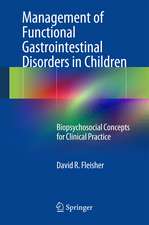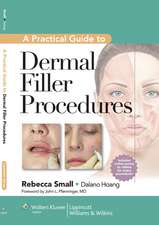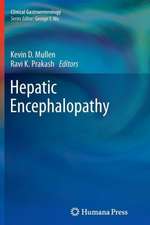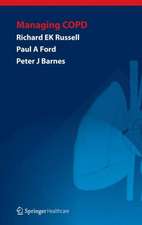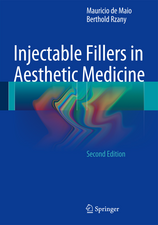Alcohol and Tobacco: Medical and Sociological Aspects of Use, Abuse and Addiction
Autor Otto-Michael Lesch, Henriette Walter, Christian Wetschka, Michie Hesselbrock, Victor Hesselbrocken Limba Engleză Paperback – 13 oct 2014
In this book, new therapeutic approaches are comprehensively described, outlining the different interactions between personality, environment and the effects of the substance.
In addition to prevention-based therapies and diagnosis, essential psychological and sociological strategies, as well as medication-based therapies, are also presented in detail. All of these therapies have realistic aims and are of global validity. In addition, the book provides a broad overview of the American and European epidemiology of alcohol and nicotine addictions. The book is written for all those who care for and offer professional therapy for alcohol and nicotine-addicted patients.
| Toate formatele și edițiile | Preț | Express |
|---|---|---|
| Paperback (1) | 635.76 lei 39-44 zile | |
| SPRINGER VIENNA – 13 oct 2014 | 635.76 lei 39-44 zile | |
| Hardback (1) | 366.83 lei 39-44 zile | |
| SPRINGER VIENNA – 15 oct 2010 | 366.83 lei 39-44 zile |
Preț: 635.76 lei
Preț vechi: 669.23 lei
-5% Nou
Puncte Express: 954
Preț estimativ în valută:
121.68€ • 126.56$ • 101.97£
121.68€ • 126.56$ • 101.97£
Carte tipărită la comandă
Livrare economică 10-15 martie
Preluare comenzi: 021 569.72.76
Specificații
ISBN-13: 9783709117187
ISBN-10: 3709117186
Pagini: 376
Dimensiuni: 170 x 244 x 20 mm
Greutate: 0.65 kg
Ediția:2011
Editura: SPRINGER VIENNA
Colecția Springer
Locul publicării:Vienna, Austria
ISBN-10: 3709117186
Pagini: 376
Dimensiuni: 170 x 244 x 20 mm
Greutate: 0.65 kg
Ediția:2011
Editura: SPRINGER VIENNA
Colecția Springer
Locul publicării:Vienna, Austria
Public țintă
Professional/practitionerCuprins
1
Information
on
the
origination
of
the
book
1.1 Aims of this book
1.2 Personal reasons for the first author writing this book
2 Addiction- a short overview over a widespread disease
2.1 Introduction
2.2 Prevention
2.3 Diagnosis of addiction
2.4 Aetiology of addiction
2.5 Secondary disorders and addiction
2.6 Secondary diseases and brain functions
2.7 Subgroups of addicts
2.8 Motivation of addicts
2.9 The path from motivation to therapy
2.10 Addiction and relapse
2.11 Specific groups of addicts
2.11.1 Co-morbidity of tobacco and alcohol addiction
2.11.2 Overweight, eating disorders
2.11.3 Gender
2.12 Addiction and the homeless
2.13 Polytoxicomania
2.14 Non-substance dependence
3 Aetiology of Addiction
3.1 The psycho-socio-biological model
3.2 Psychological theories
3.2.1 Behavioural approaches
3.2.2. Models of depth psychology
3.2.3 Depth psychological approach
3.2.4 Ego-psychological approaches
3.2.5 The psychological model of object relations
3.2.6 Approach according to theories of Narcissism
3.2.7 Explanation models according to family psychotherapy
3.3 Social explanation approaches
3.4 Biological theories about the aetiology of tobacco and alcohol addiction
3.4.1 Important findings about tobacco and alcohol use from basic research
3.4.2 Aspects of alcohol and tobacco metabolism
3.4.3 Maternal tobacco and alcohol use during pregnancy - a risk factor for the offspring?
3.4.3.1 Smoking during pregnancy
3.4.3.2 Alcohol use during pregnancy
3.5 Aetiological aspects of tobacco and alcohol addiction from an epidemiological perspective
3.6 Aetiology of addiction from a psychiatric perspective
4 Prevention strategies
4.1 Attitude towards addictive drugs
4.1.1 Attitudes towards alcohol consumption
4.1.2 Attitudes towards tobacco consumption
4.2 Primary prevention of tobacco and alcohol addiction
4.3 Secondary prevention: early diagnosis and early intervention
4.3.1 Conclusions for secondary prevention
4.3.1.1 Measures concerning the addictive drug
4.3.1.2 Measures for enabling adolescents to live drug-free
4.4 Tertiary prevention
5 Diagnosis of abuse and addiction
5.1 Problems concerning psychiatric diagnoses
5.2 Development of the term “addiction”
5.3 Substance related diagnoses in the ICD-10
5.3.1 Harmful use (ICD-10 F10.1, F17.1)
5.3.2 Dependence syndrome (ICD-10 F10.2, F17.2)
5.3.3 Withdrawal state (ICD-10: F10.3)
5.4 Substance related diagnosis in DSM-IV (American Psychiatric Association. 1994)
5.4.1 DSM-IV and the multidimensional diagnostic in five axes
5.4.2 Diagnosis according to DSM-IV axis I
5.4.2.1 Tobacco or alcohol abuse
5.4.2.2 Tobacco and alcohol addiction
5.4.3 Specifiers defining subgroups of dependence
5.4.3.1 Tolerance and withdrawl
5.4.3.2 Course specifiers
5.4.4 Therapeutic appraoch
5.4.5 Withdrawal symptoms of tobacco and alcohol
5.5 Commonalities and differences of ICD-10 and DSM-IV
5.6 Implication of these classification systems for therapy and research
5.6.1 Alcohol
5.6.1.1. Studies on medicamentous relapse prophylaxis (according to Hester RK and
Miller WR 2003)
5. 6.1.2 Studies on relapse prophylaxis using psychotherapy
5. 6.1.3 Family psychotherapy
5.6.2 Tobacco
6 Types, dimensions and aetiology
6.1 Alcohol addiction
6.1.1 Development of typology research
6.1.2 Important types for research and practice
6.1.2.1 Two-cluster solutions
6.1.2.2 The four-cluster solutions
6.1.3 Assessment of severity in different dimensions
6.1.3.1 Addiction Severity Index (ASI)
6.1.3.2 Syndrome diagnosis according to Scholz
6.2 Tobacco addiction
6.2.1 Smoking typology according to Schoberberger and Kunze
6.2.2 Smoking typology according to Fagerstroem
6.2.2 European Smoking Classification System
6.3 Alcohol addiction: Lesch’s typology
6.3.1 Framework for the definition of Lesch’s typology
6.3.2 Alcohol addiction from a longitudinal perspective 1976-1982-1995
6.3.3 The “Burgenland Model”
6.3.4 Methodology of the longitudinal study on alcohol dependence (according to DSM-III
and ICD-9), used in the development of Lesch’s typology
6.3.5 Stability in the longitudinal course
6.3.6 The four long-term illness courses used in Lesch’s typology
6.3.7 Results from studies using the Lesch typology
6.3.7.1 Studies on prognosis
6.3.7.2 Studies on biology and genetics
6.3.7.3 Relapse prophylaxis studies, anti-craving substances
6.3.7.4 Other results relating to Lesch’s typology
6.3.8 Lesch’s typology from an international comparative perspective
6.4 The relationship between alcohol dependent patients according to Lesch`s typology and the
severity of tobacco addiction
7 Motives for alcohol and/or tobacco addicted patients to seek medical help
7.1 Tobacco addiction
7.2 Alcohol addiction
7.3 Sequelae that bring patients into therapy
7.3.1 Tobacco and sequelae
7.3.1.1 Introduction
7.3.1.2 Tobacco and neurology
7.3.1.3 Tobacco and internal medicine
7.3.1.3 1Heart disease and circulatory disorders
7.3.1.3 2 Pulmonary diseases
7.3.1.4 Oncological diseases
7.3.1.5 Dentistry
7.3.1.6 Psychiatry
7.3.2 Alcohol and sequelae
7.3.2.1 Introduction
7.3.2.2. Alcohol´s significance for neurology and psychiatry
7.3.2.3 Alcohol and psychiatric disorders
7.3.2.3.1 Alcohol and affective disorders
7.3.2.3.2 Alcohol and anxiety
7.3.2.4 Alcohol and neurological disorders
7.3.2.5 Alcohol and internal medicine
7.3.2.5.1 Gastroenterology
7.3.2.5.2 Cardiovascular system
7.3.2.5.2.1 Alcoholic cardiomyopathy
7.3.2.5.2.2 Cardiac arrhythmia, “Holiday-Heart-Syndrome” and sudden cardiac
arrest
7.3.2.5.2.3 Coronary heart disease and myocardial infarct
7.3.2.5.2.4 Hypertonia
7.3.2.5.2.5. Hypotheses on the aetiology of alcohol addiction and heart diseases
7.3.2.5.2.6 Alcohol typology according to Lesch: homocysteine levels and heart disease
7.3.2.5.3. Oncological diseases
7.3.2.6. Alcohol and medication for sequelae
8 Detection of alcohol and tobacco addiction
8.1 Recommendations for the first contact
8.2 Assessment of drinking behaviour using biological markers
8.2.1 Trait markers
8.2.2 State markers
8.2.3 Associated markers
8.2.4 Practical suggestions for the use of biological markers for forensic purposes
8.2.4.1 Blood alcohol measurement
8.2.4.2 Blood alcohol concentration (BAC)
8.2.4.3 Widmark Formula
8.2.4.4 Breath alcohol
8.2.4.5 Products of alcohol metabolism
8.2.4.5.1 Ethylglucuronide
8.2.4.5.2 %CDT (Carbohydrate-deficient-transferrin)
8.3 The clinical dialogue in tobacco addiction
9 Therapeutic strategies for alcohol and tobacco dependence
9.1 Motivation for therapy in different settings
9.1.2 Motivational interviewing at the general practitioner’s
9.1.3 Motivational interviewing in internal medicine
9.1.4. Motivational interviewing during pregnancy
9.1.5. Motivational interviewing in psychiatric settings
9.2 Pharmacotherapy of alcohol and tobacco dependence
9.2.1 Alcohol dependence
9.2.2 Tobacco dependence
9.3 Pharmacotherapy of alcohol withdrawal
9.3.1 Withdrawal syndrome
9.3.2 Therapy of withdrawal states
9.3.3 Therapy of withdrawal syndromes according to Lesch’s typology
9.3.3.1 Management of detoxification in type I alcohol dependents
9.3.3.2 Management of detoxification in type II alcohol dependents
9.3.3.3 Management of detoxification in type III alcohol dependents
9.3.3.4 Management of withdrawal in type IV dependents
9.3.4 Complications during alcohol withdrawal
9.3.4.1 Withdrawal seizures (Grand Mal)
9.3.4. 2 Delirant and associated states (Meta-alcoholic psychosis)
9.4 Alternatives to withdrawal
9.4.1 Gradual reduction of drinking: “Cut down drinking” method,
according to David Sinclair
9.4.2 Case study: “Cut down drinking”
9.5 Pharmacotherapy of the tobacco withdrawal syndrome
9.5.1 Symptoms of the tobacco withdrawal syndrome
9.5.2 Therapy of the tobacco withdrawal syndrome
9.5.2.1. Withdrawal therapy of tobacco dependency with Fagerstroem ≥ 5
9.5.2.2. Withdrawal therapy of tobacco dependency with Fagerstroem ≤ 4
9.6 Medical strategies for relapse prophylaxis
9.6.1 General guidelines for relapse prophylaxis
9.6.2 Goals for relapse prophylaxis
9.6.3 Medication against so-called “positive” craving (= desire for pleasurable,
rewarding effects of the addictive substance)
9.6.3.1 Alcohol
9.6.3.2 Tobacco
9.6.4 Pharmacotherapy against so called “negative” craving (= desire for addictive
substances to relieve negative mood and anxiety)
9.6.4.1 Alcohol
9.6.4.2 Tobacco
9.6.5 Pharmacotherapy of relapse prevention in alcohol dependence
9.6.5.1 Alcohol
9.6.5.2 Tobacco
9.6.6 Relapse prevention according to Lesch’s typology
9.6.6.1 Relaps prevention in Lesch’s type I
9.6.6.2 Relaps prevention in Lesch’s type II
9.6.6.3 Relaps prevention in Lesch’s type III
9.6.6.4 Relaps prevention in Lesch’s type IV
9.6.7 Treatment of relapse according to Lesch’s typology
9.6.8 Pharmacotherapy of relapse prophylaxis in tobacco dependents
9.6.8.1 Medication for relapse prevention of tobacco dependents
9.6.8.1.1 Nicotine replacement therapy
9.6.8.1.2 Varenicline
9.6.8.1.3 Anti-depressants
9.6 8.1.4 Bupropion
9.6.8.1.5 Nortriptyline
9.6.8.1.6 Doxepin
9.6.8.1.7 Clonidine
9.6.8.1.8 Rimonabant
9.6.8.1.9 Topiramate
9.6.8.2 Therapeutic procedures according to subgroups of nicotine dependent patients
9.6.8.2.1 Subgroups according to Kunze and Schoberberger
9.6.8.2.2 Craving in subgroups of tobacco dependent patients
9.6.8.3 Pharmacotherapy in the relapse prophylaxis of tobacco dependent patients according to
subgroups
9.6.8.3.1 Relapse prophylaxis of cluster I
9.6.8.3.2 Relapse prophylaxis of cluster II
9.6.8.3. 3 Relapse prophylaxis of cluster III
9.6.8.3.4 Relapse prophylaxis of cluster IV
9.6.8.4 Medication of tobacco dependent patients in special situations
9.6.8.4.1 Nicotine consumption in combination with other dependencies and/or
other psychiatric disorders
9.6.8.4.2 Tobacco dependence and pregnancy
10 Sociotherapy of alcohol and tobacco dependents with regards to Lesch’s typology
10.1 Alcohol and tobacco
10.2 The sociotherapeutic mission
10.3 Classification Psychotherapy-Sociotherapy
10.4 Sociogenesis and sociotherapeutic chances
10.4.1 Primary, secondary and tertiary sociogenesis
10.4.2 Sociological factor on a macro level
10.4.3 Co-morbidity and marginal group identity
10.4.4 The link between social relationships (factors on a social macro level): group
coherence and resilience
10.4.5 Analogy to Gerontology: the atrophy of the “social atom”
10.5 Sociotherapy in the context of therapeutic phases
10.5.1 Sociotherapy location(s)
10.5.2 Therapeutic phases and settings
10.6 State of the art: overlapping perspectives for sociotherapeutic housing and support
projects for alcohol dependents
10.6.1 Standard categories
10.6.2 Excursus: supported housing projects - worlds of their own
10.7 Motivation- a challenge for whom?
10.7.1 Ambivalent functions of motivation
10.7.2 Relationship between dependency and motivation systems
10.8 Sociotherapy as a means of promoting networking
10.8.1 Micro and meso levels of networking
10.8.2 Macro levels of networking
10.9 Sociotherapy with alcohol dependents in the context of Lesch’s typology
10.9.1 Critical relationship between psychiatry and sociotherapy
10.9.2 Application of the typology in sociotherapeutic contexts
10.9.2 Relationship between type and self-regulation
10.9.4 Therapeutic goals and strategies
10.9.5 Sociotherapeutic aspects of therapy with alcohol dependents, who are
fundamentally impaired in their performance
10.9.5.1 Type IV characteristics
10.9.5.2 Cerebral damages as a result of chronic alcohol abuse, frontal lobe syndrome
10.9.5.3 Executive Cognitive Functioning
10.9.5.4 Coping with violence
10.9.5.5. Sociotherapeutic structures instead of psychotherapy
10.9.5.6 Stabilisation through social stimulation (SSS)
10.9.5.7 Compliance
10.9.5.8 Overview of pedagogic context variables
10.9.5.9 Over-challenge, “motivation”
10.9.5.10 Case studies of long-term abstinent type IV patients
10.9.5.10.1 Norbert T., Type IV
10.9.5.10.2 Peter N., Type IV
10.9.5.10.3 Karl H., Type IV
Appendix 1 Lesch Alcoholism Typology – Questionnaire
Appendix 2 Lesch European Smoker Classification
Index
About the Authors
1.1 Aims of this book
1.2 Personal reasons for the first author writing this book
2 Addiction- a short overview over a widespread disease
2.1 Introduction
2.2 Prevention
2.3 Diagnosis of addiction
2.4 Aetiology of addiction
2.5 Secondary disorders and addiction
2.6 Secondary diseases and brain functions
2.7 Subgroups of addicts
2.8 Motivation of addicts
2.9 The path from motivation to therapy
2.10 Addiction and relapse
2.11 Specific groups of addicts
2.11.1 Co-morbidity of tobacco and alcohol addiction
2.11.2 Overweight, eating disorders
2.11.3 Gender
2.12 Addiction and the homeless
2.13 Polytoxicomania
2.14 Non-substance dependence
3 Aetiology of Addiction
3.1 The psycho-socio-biological model
3.2 Psychological theories
3.2.1 Behavioural approaches
3.2.2. Models of depth psychology
3.2.3 Depth psychological approach
3.2.4 Ego-psychological approaches
3.2.5 The psychological model of object relations
3.2.6 Approach according to theories of Narcissism
3.2.7 Explanation models according to family psychotherapy
3.3 Social explanation approaches
3.4 Biological theories about the aetiology of tobacco and alcohol addiction
3.4.1 Important findings about tobacco and alcohol use from basic research
3.4.2 Aspects of alcohol and tobacco metabolism
3.4.3 Maternal tobacco and alcohol use during pregnancy - a risk factor for the offspring?
3.4.3.1 Smoking during pregnancy
3.4.3.2 Alcohol use during pregnancy
3.5 Aetiological aspects of tobacco and alcohol addiction from an epidemiological perspective
3.6 Aetiology of addiction from a psychiatric perspective
4 Prevention strategies
4.1 Attitude towards addictive drugs
4.1.1 Attitudes towards alcohol consumption
4.1.2 Attitudes towards tobacco consumption
4.2 Primary prevention of tobacco and alcohol addiction
4.3 Secondary prevention: early diagnosis and early intervention
4.3.1 Conclusions for secondary prevention
4.3.1.1 Measures concerning the addictive drug
4.3.1.2 Measures for enabling adolescents to live drug-free
4.4 Tertiary prevention
5 Diagnosis of abuse and addiction
5.1 Problems concerning psychiatric diagnoses
5.2 Development of the term “addiction”
5.3 Substance related diagnoses in the ICD-10
5.3.1 Harmful use (ICD-10 F10.1, F17.1)
5.3.2 Dependence syndrome (ICD-10 F10.2, F17.2)
5.3.3 Withdrawal state (ICD-10: F10.3)
5.4 Substance related diagnosis in DSM-IV (American Psychiatric Association. 1994)
5.4.1 DSM-IV and the multidimensional diagnostic in five axes
5.4.2 Diagnosis according to DSM-IV axis I
5.4.2.1 Tobacco or alcohol abuse
5.4.2.2 Tobacco and alcohol addiction
5.4.3 Specifiers defining subgroups of dependence
5.4.3.1 Tolerance and withdrawl
5.4.3.2 Course specifiers
5.4.4 Therapeutic appraoch
5.4.5 Withdrawal symptoms of tobacco and alcohol
5.5 Commonalities and differences of ICD-10 and DSM-IV
5.6 Implication of these classification systems for therapy and research
5.6.1 Alcohol
5.6.1.1. Studies on medicamentous relapse prophylaxis (according to Hester RK and
Miller WR 2003)
5. 6.1.2 Studies on relapse prophylaxis using psychotherapy
5. 6.1.3 Family psychotherapy
5.6.2 Tobacco
6 Types, dimensions and aetiology
6.1 Alcohol addiction
6.1.1 Development of typology research
6.1.2 Important types for research and practice
6.1.2.1 Two-cluster solutions
6.1.2.2 The four-cluster solutions
6.1.3 Assessment of severity in different dimensions
6.1.3.1 Addiction Severity Index (ASI)
6.1.3.2 Syndrome diagnosis according to Scholz
6.2 Tobacco addiction
6.2.1 Smoking typology according to Schoberberger and Kunze
6.2.2 Smoking typology according to Fagerstroem
6.2.2 European Smoking Classification System
6.3 Alcohol addiction: Lesch’s typology
6.3.1 Framework for the definition of Lesch’s typology
6.3.2 Alcohol addiction from a longitudinal perspective 1976-1982-1995
6.3.3 The “Burgenland Model”
6.3.4 Methodology of the longitudinal study on alcohol dependence (according to DSM-III
and ICD-9), used in the development of Lesch’s typology
6.3.5 Stability in the longitudinal course
6.3.6 The four long-term illness courses used in Lesch’s typology
6.3.7 Results from studies using the Lesch typology
6.3.7.1 Studies on prognosis
6.3.7.2 Studies on biology and genetics
6.3.7.3 Relapse prophylaxis studies, anti-craving substances
6.3.7.4 Other results relating to Lesch’s typology
6.3.8 Lesch’s typology from an international comparative perspective
6.4 The relationship between alcohol dependent patients according to Lesch`s typology and the
severity of tobacco addiction
7 Motives for alcohol and/or tobacco addicted patients to seek medical help
7.1 Tobacco addiction
7.2 Alcohol addiction
7.3 Sequelae that bring patients into therapy
7.3.1 Tobacco and sequelae
7.3.1.1 Introduction
7.3.1.2 Tobacco and neurology
7.3.1.3 Tobacco and internal medicine
7.3.1.3 1Heart disease and circulatory disorders
7.3.1.3 2 Pulmonary diseases
7.3.1.4 Oncological diseases
7.3.1.5 Dentistry
7.3.1.6 Psychiatry
7.3.2 Alcohol and sequelae
7.3.2.1 Introduction
7.3.2.2. Alcohol´s significance for neurology and psychiatry
7.3.2.3 Alcohol and psychiatric disorders
7.3.2.3.1 Alcohol and affective disorders
7.3.2.3.2 Alcohol and anxiety
7.3.2.4 Alcohol and neurological disorders
7.3.2.5 Alcohol and internal medicine
7.3.2.5.1 Gastroenterology
7.3.2.5.2 Cardiovascular system
7.3.2.5.2.1 Alcoholic cardiomyopathy
7.3.2.5.2.2 Cardiac arrhythmia, “Holiday-Heart-Syndrome” and sudden cardiac
arrest
7.3.2.5.2.3 Coronary heart disease and myocardial infarct
7.3.2.5.2.4 Hypertonia
7.3.2.5.2.5. Hypotheses on the aetiology of alcohol addiction and heart diseases
7.3.2.5.2.6 Alcohol typology according to Lesch: homocysteine levels and heart disease
7.3.2.5.3. Oncological diseases
7.3.2.6. Alcohol and medication for sequelae
8 Detection of alcohol and tobacco addiction
8.1 Recommendations for the first contact
8.2 Assessment of drinking behaviour using biological markers
8.2.1 Trait markers
8.2.2 State markers
8.2.3 Associated markers
8.2.4 Practical suggestions for the use of biological markers for forensic purposes
8.2.4.1 Blood alcohol measurement
8.2.4.2 Blood alcohol concentration (BAC)
8.2.4.3 Widmark Formula
8.2.4.4 Breath alcohol
8.2.4.5 Products of alcohol metabolism
8.2.4.5.1 Ethylglucuronide
8.2.4.5.2 %CDT (Carbohydrate-deficient-transferrin)
8.3 The clinical dialogue in tobacco addiction
9 Therapeutic strategies for alcohol and tobacco dependence
9.1 Motivation for therapy in different settings
9.1.2 Motivational interviewing at the general practitioner’s
9.1.3 Motivational interviewing in internal medicine
9.1.4. Motivational interviewing during pregnancy
9.1.5. Motivational interviewing in psychiatric settings
9.2 Pharmacotherapy of alcohol and tobacco dependence
9.2.1 Alcohol dependence
9.2.2 Tobacco dependence
9.3 Pharmacotherapy of alcohol withdrawal
9.3.1 Withdrawal syndrome
9.3.2 Therapy of withdrawal states
9.3.3 Therapy of withdrawal syndromes according to Lesch’s typology
9.3.3.1 Management of detoxification in type I alcohol dependents
9.3.3.2 Management of detoxification in type II alcohol dependents
9.3.3.3 Management of detoxification in type III alcohol dependents
9.3.3.4 Management of withdrawal in type IV dependents
9.3.4 Complications during alcohol withdrawal
9.3.4.1 Withdrawal seizures (Grand Mal)
9.3.4. 2 Delirant and associated states (Meta-alcoholic psychosis)
9.4 Alternatives to withdrawal
9.4.1 Gradual reduction of drinking: “Cut down drinking” method,
according to David Sinclair
9.4.2 Case study: “Cut down drinking”
9.5 Pharmacotherapy of the tobacco withdrawal syndrome
9.5.1 Symptoms of the tobacco withdrawal syndrome
9.5.2 Therapy of the tobacco withdrawal syndrome
9.5.2.1. Withdrawal therapy of tobacco dependency with Fagerstroem ≥ 5
9.5.2.2. Withdrawal therapy of tobacco dependency with Fagerstroem ≤ 4
9.6 Medical strategies for relapse prophylaxis
9.6.1 General guidelines for relapse prophylaxis
9.6.2 Goals for relapse prophylaxis
9.6.3 Medication against so-called “positive” craving (= desire for pleasurable,
rewarding effects of the addictive substance)
9.6.3.1 Alcohol
9.6.3.2 Tobacco
9.6.4 Pharmacotherapy against so called “negative” craving (= desire for addictive
substances to relieve negative mood and anxiety)
9.6.4.1 Alcohol
9.6.4.2 Tobacco
9.6.5 Pharmacotherapy of relapse prevention in alcohol dependence
9.6.5.1 Alcohol
9.6.5.2 Tobacco
9.6.6 Relapse prevention according to Lesch’s typology
9.6.6.1 Relaps prevention in Lesch’s type I
9.6.6.2 Relaps prevention in Lesch’s type II
9.6.6.3 Relaps prevention in Lesch’s type III
9.6.6.4 Relaps prevention in Lesch’s type IV
9.6.7 Treatment of relapse according to Lesch’s typology
9.6.8 Pharmacotherapy of relapse prophylaxis in tobacco dependents
9.6.8.1 Medication for relapse prevention of tobacco dependents
9.6.8.1.1 Nicotine replacement therapy
9.6.8.1.2 Varenicline
9.6.8.1.3 Anti-depressants
9.6 8.1.4 Bupropion
9.6.8.1.5 Nortriptyline
9.6.8.1.6 Doxepin
9.6.8.1.7 Clonidine
9.6.8.1.8 Rimonabant
9.6.8.1.9 Topiramate
9.6.8.2 Therapeutic procedures according to subgroups of nicotine dependent patients
9.6.8.2.1 Subgroups according to Kunze and Schoberberger
9.6.8.2.2 Craving in subgroups of tobacco dependent patients
9.6.8.3 Pharmacotherapy in the relapse prophylaxis of tobacco dependent patients according to
subgroups
9.6.8.3.1 Relapse prophylaxis of cluster I
9.6.8.3.2 Relapse prophylaxis of cluster II
9.6.8.3. 3 Relapse prophylaxis of cluster III
9.6.8.3.4 Relapse prophylaxis of cluster IV
9.6.8.4 Medication of tobacco dependent patients in special situations
9.6.8.4.1 Nicotine consumption in combination with other dependencies and/or
other psychiatric disorders
9.6.8.4.2 Tobacco dependence and pregnancy
10 Sociotherapy of alcohol and tobacco dependents with regards to Lesch’s typology
10.1 Alcohol and tobacco
10.2 The sociotherapeutic mission
10.3 Classification Psychotherapy-Sociotherapy
10.4 Sociogenesis and sociotherapeutic chances
10.4.1 Primary, secondary and tertiary sociogenesis
10.4.2 Sociological factor on a macro level
10.4.3 Co-morbidity and marginal group identity
10.4.4 The link between social relationships (factors on a social macro level): group
coherence and resilience
10.4.5 Analogy to Gerontology: the atrophy of the “social atom”
10.5 Sociotherapy in the context of therapeutic phases
10.5.1 Sociotherapy location(s)
10.5.2 Therapeutic phases and settings
10.6 State of the art: overlapping perspectives for sociotherapeutic housing and support
projects for alcohol dependents
10.6.1 Standard categories
10.6.2 Excursus: supported housing projects - worlds of their own
10.7 Motivation- a challenge for whom?
10.7.1 Ambivalent functions of motivation
10.7.2 Relationship between dependency and motivation systems
10.8 Sociotherapy as a means of promoting networking
10.8.1 Micro and meso levels of networking
10.8.2 Macro levels of networking
10.9 Sociotherapy with alcohol dependents in the context of Lesch’s typology
10.9.1 Critical relationship between psychiatry and sociotherapy
10.9.2 Application of the typology in sociotherapeutic contexts
10.9.2 Relationship between type and self-regulation
10.9.4 Therapeutic goals and strategies
10.9.5 Sociotherapeutic aspects of therapy with alcohol dependents, who are
fundamentally impaired in their performance
10.9.5.1 Type IV characteristics
10.9.5.2 Cerebral damages as a result of chronic alcohol abuse, frontal lobe syndrome
10.9.5.3 Executive Cognitive Functioning
10.9.5.4 Coping with violence
10.9.5.5. Sociotherapeutic structures instead of psychotherapy
10.9.5.6 Stabilisation through social stimulation (SSS)
10.9.5.7 Compliance
10.9.5.8 Overview of pedagogic context variables
10.9.5.9 Over-challenge, “motivation”
10.9.5.10 Case studies of long-term abstinent type IV patients
10.9.5.10.1 Norbert T., Type IV
10.9.5.10.2 Peter N., Type IV
10.9.5.10.3 Karl H., Type IV
Appendix 1 Lesch Alcoholism Typology – Questionnaire
Appendix 2 Lesch European Smoker Classification
Index
About the Authors
Recenzii
From
the
reviews:
“This is an updated English-language version of a well-established comprehensive German book on alcohol and nicotine addiction. … The book is written for all professionals, clinicians, researchers, and students involved in or interested in the care and treatment of alcohol and nicotine addicted patients. … This is a comprehensive account of the different interactions among personality, environment, and effects of the substance and biology on addiction. … an excellent reference and a must read for individuals in this field.” (Michael Easton, Doody’s Review Service, May, 2011)
“This is an updated English-language version of a well-established comprehensive German book on alcohol and nicotine addiction. … The book is written for all professionals, clinicians, researchers, and students involved in or interested in the care and treatment of alcohol and nicotine addicted patients. … This is a comprehensive account of the different interactions among personality, environment, and effects of the substance and biology on addiction. … an excellent reference and a must read for individuals in this field.” (Michael Easton, Doody’s Review Service, May, 2011)
Notă biografică
Otto
Michael
Lesch,MD
is
currently
President
of
the
Austrian
Society
of
Addiction
Medicine,
Head
of
the
Alcohol
Research
Group
of
the
Medical
University
of
Vienna,
Department
of
Psychiatry
and
Psychotherapy.
Since
1972
he
is
responsible
for
longterm
studies
in
alcohol
dependence.
He
organized
many
international
clinical
trials
and
basic
research
in
alcohol
and
tobacco
dependence.
He
served
12
years
as
secretary
of
ESBRA
and
organized
European
networks
for
alcohol
research.
He
always
bridged
the
gap
between
basic
and
clinical
research
and
developed
clinical
used
tools
to
define
subgroups
of
addiction
for
better
treatment
approaches.
His
assessment
tools
are
now
available
in
many
different
languages
(www.LAT-online.at).
Henriette Walter, MD, is University Professor at the Dept. of Psychiatry and Psychotherapy. She is a member of the Senate and of many commissions of the Medical University, Vienna. Dr. Walter is working in the field of alcoholism since more than 20 years, both, practically and scientifically, with over 200 publications. She is secretary of the ‘AUSAM, the Austrian Society of Addiction Medicine and an ESBRA board member. She is associate editor of the Journal “Hypnose”, a field in which she takes an active scientific interest since 1982. With the “theory of frontalisation” as the neuro-equivalent for the hypnotic state, she contributed to the neuroimaging research in this field. She gives regular training courses in medical hypnosis.
Christian Wetschka,PhD.is socialpedagogue, working in diverse socialtherapeutic and pastoral fields, supervisor, founder of Verein Struktur, which provides commune-flats for alcohol dependent persons
Michie N Hesselbrock, PhD is Professor Emeritus at the School of Social Work, and Professor of Psychiatry at the School of Medicine, University of Connecticut. She held the Zach’s Chair, and was the founder and director of the PhD program at the School of Social Work before her retirement. She has served on several NIH study sections and VA Merit review committees as a regular member and as an ad hoc reviewer. Her research interests include epidemiology, behavior genetics, and health disparities of alcoholism and treatment
Victor Hesselbrock,PhD is currently Professor and Interim Chairman, Department of Psychiatry, University of Connecticut School of Medicine. He holds the Physicians Health Services endowed chair in Addiction Studies. Dr. Hesselbrock is the Principal Investigator and Scientific Director of the University of Connecticut’s NIH/NIAAA funded Alcohol Research Center and is co-PI of the NIH funded national Collaborative Study on the Genetics of Alcoholism (COGA). He is a past President of the Research Society on Alcoholism (RSA). Dr. Hesselbrock is Associate Editor ofAlcoholism: Clinical and Experimental Research, a Review Editor forAddiction, and a member of the editorial board of theJournal of Studies on Alcohol and Drugs. His research interests include: the genetic epidemiology of alcoholism; co-morbid psychiatric conditions and substance dependence; and psychosocial, cognitive, and genetic risk factors for developing alcohol dependence and alcohol-related problems.
Henriette Walter, MD, is University Professor at the Dept. of Psychiatry and Psychotherapy. She is a member of the Senate and of many commissions of the Medical University, Vienna. Dr. Walter is working in the field of alcoholism since more than 20 years, both, practically and scientifically, with over 200 publications. She is secretary of the ‘AUSAM, the Austrian Society of Addiction Medicine and an ESBRA board member. She is associate editor of the Journal “Hypnose”, a field in which she takes an active scientific interest since 1982. With the “theory of frontalisation” as the neuro-equivalent for the hypnotic state, she contributed to the neuroimaging research in this field. She gives regular training courses in medical hypnosis.
Christian Wetschka,PhD.is socialpedagogue, working in diverse socialtherapeutic and pastoral fields, supervisor, founder of Verein Struktur, which provides commune-flats for alcohol dependent persons
Michie N Hesselbrock, PhD is Professor Emeritus at the School of Social Work, and Professor of Psychiatry at the School of Medicine, University of Connecticut. She held the Zach’s Chair, and was the founder and director of the PhD program at the School of Social Work before her retirement. She has served on several NIH study sections and VA Merit review committees as a regular member and as an ad hoc reviewer. Her research interests include epidemiology, behavior genetics, and health disparities of alcoholism and treatment
Victor Hesselbrock,PhD is currently Professor and Interim Chairman, Department of Psychiatry, University of Connecticut School of Medicine. He holds the Physicians Health Services endowed chair in Addiction Studies. Dr. Hesselbrock is the Principal Investigator and Scientific Director of the University of Connecticut’s NIH/NIAAA funded Alcohol Research Center and is co-PI of the NIH funded national Collaborative Study on the Genetics of Alcoholism (COGA). He is a past President of the Research Society on Alcoholism (RSA). Dr. Hesselbrock is Associate Editor ofAlcoholism: Clinical and Experimental Research, a Review Editor forAddiction, and a member of the editorial board of theJournal of Studies on Alcohol and Drugs. His research interests include: the genetic epidemiology of alcoholism; co-morbid psychiatric conditions and substance dependence; and psychosocial, cognitive, and genetic risk factors for developing alcohol dependence and alcohol-related problems.
Caracteristici
Comprehensive
guide
for
detection
and
therapy
of
acohol
and
nicotine
abuse
Classification of disease into groups and subgroups
Description of tailor-made therapies of global validity
Interdisciplinary approach
Classification of disease into groups and subgroups
Description of tailor-made therapies of global validity
Interdisciplinary approach
Descriere
In
this
book,
new
therapeutic
approaches
are
comprehensively
described,
outlining
the
different
interactions
between
personality,
environment
and
the
effects
of
the
substance.
In
addition,
the
book
provides
a
broad
overview
of
the
American
and
European
epidemiology
of
alcohol
and
nicotine
addictions.
The
book
is
written
for
all
those
who
care
for
and
offer
professional
therapy
for
alcohol
and
nicotine-addicted
patients.
